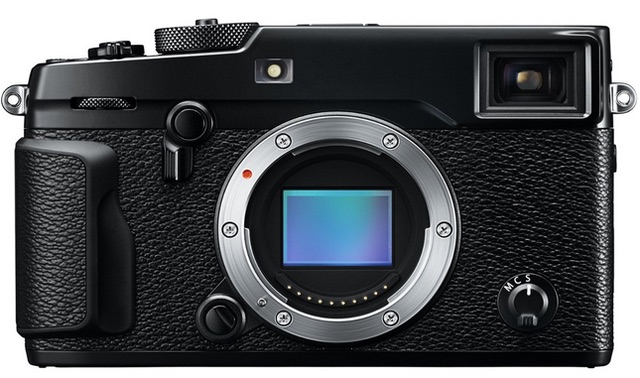Fujifilm X-Pro2 Reviews :: The Good & The Bad (or rather Strange)
 Fujifilm X-Pro2
Fujifilm X-Pro2
USA: BHphoto / AmazonUS / Adorama / CANADA: AmazonCA / EUROPE: AmazonDE / AmazonUK / WexUK / PCHstore / AmazonITA / AmazonFR / AmazonESP / AUSTRALIA: CameraPro
_ _ _
There are massive Reviews out there about the Fujifilm X-Pro2, mostly very positive, but some aren’t. And on this blog I feature everything I find regarding Fuji: The Good, The Bad… and also some aspects of a review that I consider rather strange.
So let’s start
The Polish site optyczne (translation) tested the X-Pro2: Good news first: the Autofocus is faster and much more accurate :). But then they highlight 3 main critics to the X-Pro2:
1) RAW: X-Pro2 Dynamic Range worst than X-T10: I was shocked when I’ve read this, because until now everyone said that there is an improvement (some say big improvement, TheCameraStoreTV says a little improvement).
But then I saw that they used dcraw to decode X-Pro2 RAF files, which still has no X-Trans III support! I consider this a rather strange decision, I mean, using a software that still does not support the X-Trans III RAF files to judge the RAW quality…
More interesting are point 2) and 3):
2) Visible Phase Detection Pixels: I don’t know the exact exposure and test conditions, but optyczne shows visible phase detection pixels in the dark images. I’ve asked optyczne and it seems that this is nothing really new for cameras featuring phase detection pixels, since it’s common also to other brands, that use sensors with phase detection pixels.
For example the extremely popular Olympus E-M1 has this “issue” too (as also documented at optyczne).
If Optyczne is right, then I guess camera manufacutres might have made the following consideration: Outside of some very special lab tests, in real life, visible phase detection pixels will never be an issue… and actually even in lab tests it seems almost impossible to produce this effect (have you ever read anything about it on dpreview, imaging-resource, photozone & Co?). But what you will really notice in real life, is the faster AF… with every single shot you take. So let’s put those Phase Detection Pixels into the sensor.
And for what is worth, also in my thousands of shots with my X-T1 (and previously X-E2), from long exposures to the highest ISO, I could never see anything like that. I’ve also contacted my buddy Ale from 43rumors, who also never experienced anything like visible pixels on his Olympus cameras, too. I’m waiting for feedback from SonyAlphaRumors on the same thing.
Anyway, if the test is reliable (or the tested X-Pro2 not faulty), then I’m confident to say, that it’s an issue nobody of us will ever experience in 99,9% of our shots.
3) White Glow: Optyczne shows a white glow on images with a 3 minutes dark exposure. I did something I never do otherwise: I’ve contacted Fujfiilm regarding this (a very “cold” email exchange, I tell you). They say Optyczne tested 2 X-Pro2’s, which Optyczne was told by Fuji Poland to be final production models, but they actually were pre-production cameras. Anyway, they’ve read the review, tested it on several final production X-Pro2 (those that you’ll get in your hands soon), and could not duplicate the issue in any way.
Maybe the white glow might have been an issue with pre-production cameras (and real reason for the X-Pro2 delay?), but fact is that Fujifilm assured FujiRumors that this did not happen with production cameras… so there won’t be a “light-leak-alike” recall action.
So, that’s the story… now let’s go back to some more real-life reviews ;)
Fujifilm X-Pro2 Review at whatdigitalcamera :
Where the X-Pro1 stuttered for a fraction of a second on a few occasions before it acquired focus, the X-Pro2 showed no such signs of delay and locked on instantaneously. It was a similar story testing both in a low-light street scene. The X-Pro2 revealed no signs of difficulty focusing in the challenging environments I subjected it to.
Pushing the sensor to the extremes of its ISO range reveals users can shoot confidently between ISO 100-6,400 without fear of noise severely degrading image quality. Colour noise is extremely well-controlled and, although luminance noise makes its presence known at high sensitivities, the level of detail the sensor resolves up to ISO 25,600 is phenomenal.
The X-Pro2 manages to do just that and then some – it’s an absolutely stunning premium compact system camera that we can categorically say has earned its place as the flagship model in the X-Series.“
Full Review at digitalcameraworld:
“We liked
There really is plenty to like about the X-Pro. On the imaging side you benefit from a high-resolution sensor, sound metering and very good JPEGs straight out of the camera, while the addition of the focus lever and the consolidation of various other controls make for a more refined camera. Faster focusing is a bonus, as is the higher resolution viewfinder, and the ability to extensively customise the camera and develop a personal menu just makes it even better.
We disliked
Not all the physical controls have been changed for the better and the grip, exposure compensation dial and rear command dial can be troublesome. Even on the Standard performance setting battery life is fairly unimpressive, and while it’s possible to achieve more shots than stated, you’ll likely to need another battery if shooting over the course of a day. The lack of an articulating or tilting LCD screen is also a shame.“
MUST READ: X-Pert Corner X-Pro2 First Look / X-Pro2 with Samyang 12mm F2 NCS and XF18mm F2 at f16.click / Fujifilm X-pro2 newborn photos (back lit images) at williamchua / Facade at olafphotoblog / Heritage Day In Port Moody at olafphotoblog
Acros film simulation with the Fuji X-Pro2 at prophotonut


